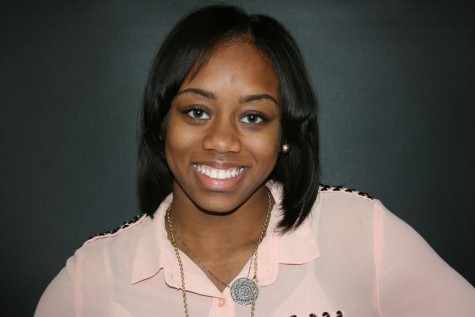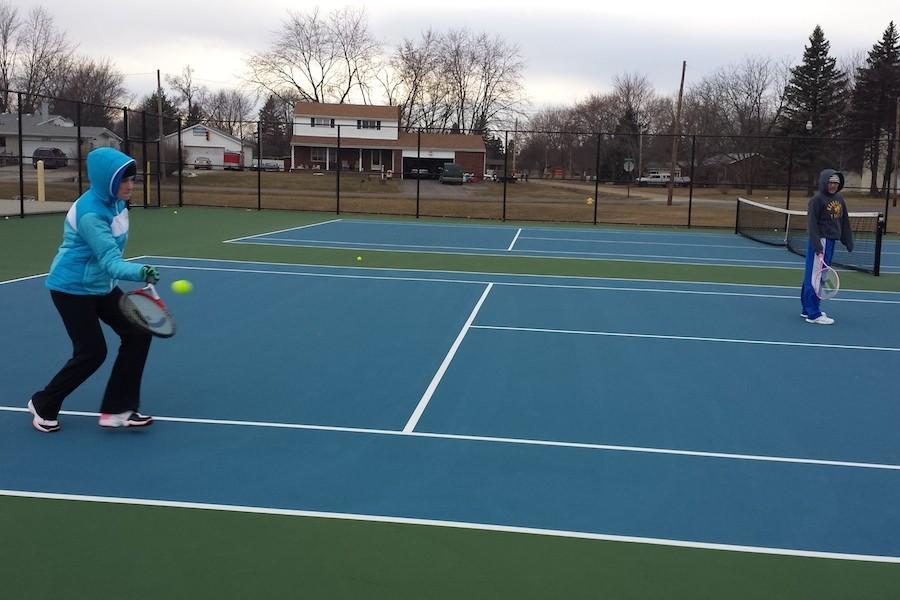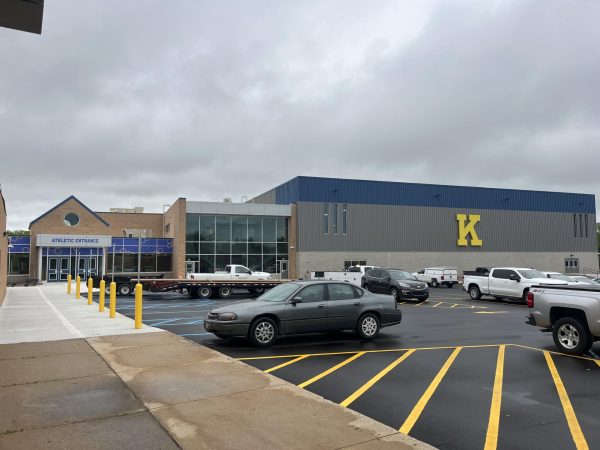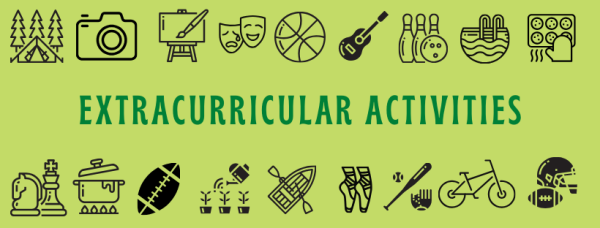Extracurriculars boost academic performance
IMAGE / Aysia Booth
Juniors Kelsie Rose (left) and Jasmine Patrick practice playing a doubles match on March 23. Both of these girls are actively involved in extracurricular activities.
Like many students, junior Santino Guerra is highly involved both in and out of school.
Guerra is a chapter officer for DECA, the Class of 2016 president, a member of National Honor Society, and a brother of the Gleaner Christian fraternity. He volunteers often, plays seasonal sports, and stays on top of his grades.
Almost every high school has some form of extracurricular activities, whether they are in the form of sports or clubs.
According to Afterschool Alliance, a non-profit organization that commits to making sure students have quality and affordable after-school programs, two million high school students participate in after-school programs.
Ms. Jodi Grant, executive director of Afterschool Alliance, said that after-school programs have a huge effect on attendance, behavior, and class completion, which can prevent students from dropping out.
The National Center for Education Statistics stated that “extracurricular activities provide a channel for reinforcing the lessons learned in the classroom, offering students the opportunity to apply academic skills in a real-world context, and are thus considered part of a well-rounded education.”
Here at Kearsley, students are offered many extracurricular activities, from sports to clubs.
“I participate in so many extracurricular activities because it helps me gain experience,” Guerra said.
Principal Brian Wiskur believes that after-school programs are very important in high school and without them school would be boring.
“During the 2013-2014 school year, 51.5 percent of Kearsley students participated in some type of after school program,” Wiskur said.
Early research done by the National Center of Education and Statistics indicates that students who participate in extracurricular activities have better academic outcomes than students who do not participate in extracurricular activities.
Data from the 2013-2014 athletics department shows that students who participated in sports averaged a 3.02 GPA, while students who did not participate in sports averaged a 2.27 GPA.
“Athletics especially have an effect on academics because student athletes have to adhere to the athletics code of conduct, which helps kids do well,” Wiskur said.
Afterschool Alliance says that after school programs not only keep students safe, but also has a huge contribution to academic performance, behavior, attendance, and health, and they even support full time working families.
Mr. Matt Moore, assistant principal also feels that extracurriculars contribute to academic performance.
“Extracurriculars are an important part of high school. Students have success socially and academically,” Moore said.

Class: Junior
Clubs: Committed To Excellence and Opportunities
Athletics: Dance
Hobbies: Reading, Dancing, Blogging
Future Plans: Undecided...










